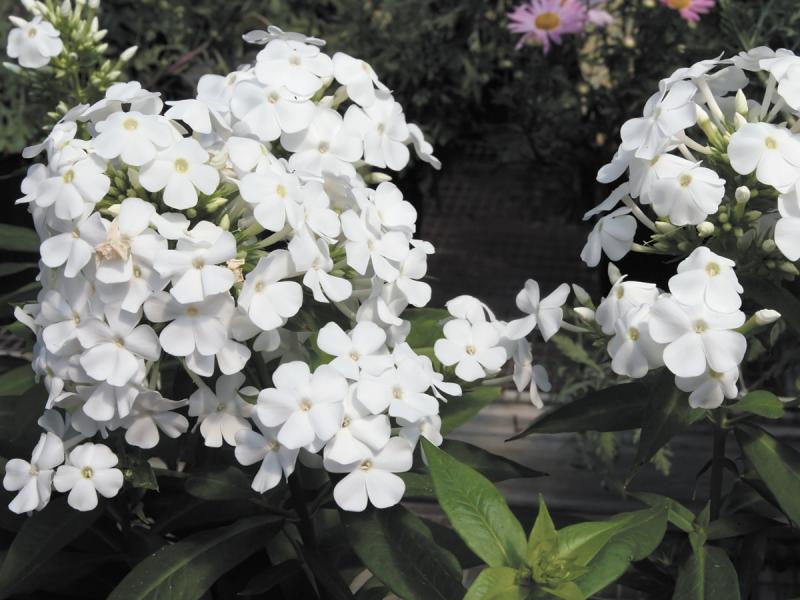The song that became "Battle Hymn of the Republic" started with the soldiers of the Massachusetts 12th Regiment, and went on to become the most popular anthem of Union soldiers during the Civil War. "John Brown's body lies a-mouldering in the grave, but his soul goes marching on."
Mold not only attacks freedom fighters a-mouldering in the grave, but attacks plants as well. Garden mildew is just a specific kind of mold. Powdery mildew is one of the most common garden diseases. While nearly every plant can get mildew, some are more susceptible than others. Mildew often attacks crab apples, lilacs, phlox, bee balm (Monarda) and roses. Food crops that often get mildew are cucumbers, grapes and squash, including pumpkins. Powdery mildew looks like baby powder on the foliage of infected plants. Powdery mildew can infect blossoms and fruit. Even though there are many types of powdery mildew, they all are pretty much alike.
Because powdery mildew fungi are host-specific, each variety infects a specific plant, so powdery mildew from your lilacs will not infect your cucumbers. All varieties of powdery mildew grow under the same conditions of dampness, poor air circulation and high humidity. To fight powdery mildew, start by growing powdery mildew-resistant cultivars.
The garden phlox David (Phlox paniculata David) blooms from July through September with snow-white, very fragrant flowers held on three- to four-foot-tall stems. Phlox David is extremely resistant to mildew. Another mildew-resistant garden phlox is the brilliant, violet-red Robert Poore (Phlox paniculata Robert Poore). This red beauty is just slightly shorter at three feet tall, so it goes well in the front of the phlox bed. Then there is the mildew-resistant, neon-pink Speed Limit 45 (Phlox paniculata Speed Limit 45). All of these phlox grow well in USDA zones 4-8. Phlox Speed Limit 45 will even grow as far north as USDA plant hardiness zone 3.
In the vegetable garden, Provider, Valentino and Nickel are bush green beans that are resistant to powdery mildew. The carrot Bolero is resistant to powdery mildew, as are cucumbers Eureka, Jackson and Patio Pickle. For trouble-free lettuce, choose butterhead Adriana and leaf lettuces Nevada and red-leafed Red Fire M.I. Resistant melons include Ambrosia, Burpee Hybrid Early Gala and Sarah's Choice. Disease-resistant peas include Encore, Sugar Sprint and Super Sugar Snap. Mildew-resistant pumpkins include Magic Lantern, Gold Dust, Bumpkin, Gladiator, Touch of Autumn and Hobbit.
To fight mildew, keep good air circulation by allowing lots of space between plants, and pruning out crowded limbs or stems. Powdery mildew attacks young growth, so never fertilize infected plants until the mildew is gone. Don't water plants from above, or you just dampen the leaves and encourage more mildew.
You can make a simple and safe home remedy with just baking soda and water. You will have to reapply every week or two or immediately after any rains. If any of your plants get infected, remove and destroy the infected leaves and stems. If it is widespread, you may want to destroy the entire plant.
Powdery mildew can overwinter in dead plants and soil only to emerge in the spring and spread spores by wind, insects, and even splashing water. You can treat mildew with several home remedies. Baking soda mixed with horticultural oil works well. Also try a solution of one part whole milk to nine parts water. Or puree two full garlic heads in water, strain and spray.
Plant the right varietals, then spray at the first sign of trouble, and you should never have any plants a-mouldering in the grave.




















































